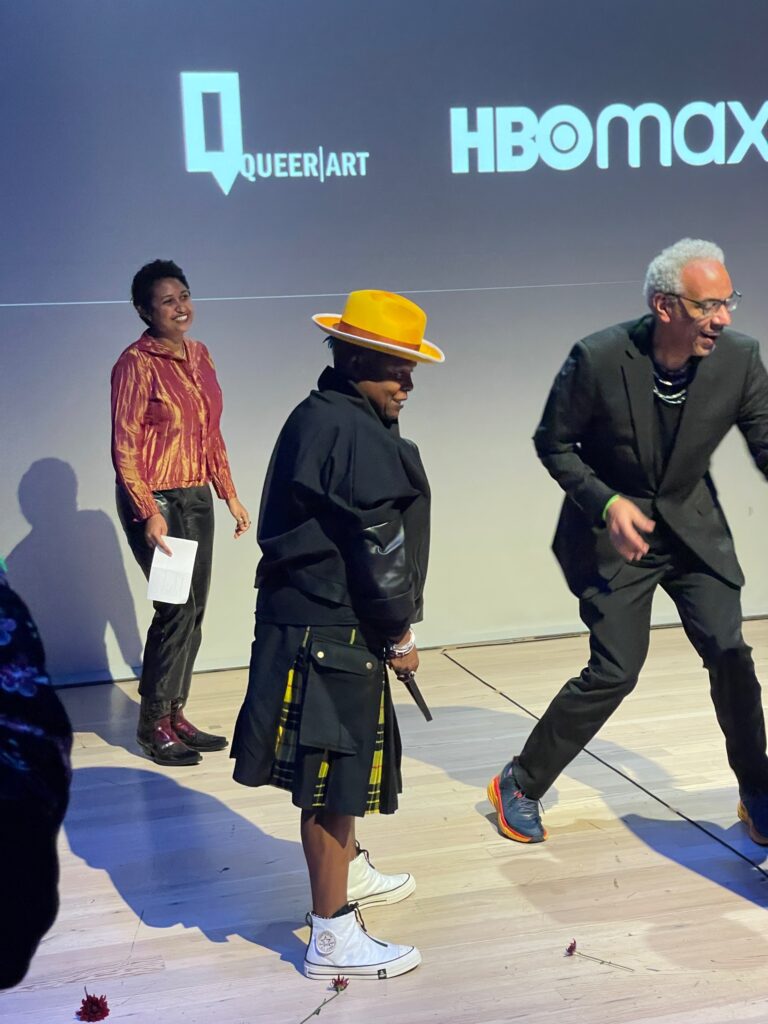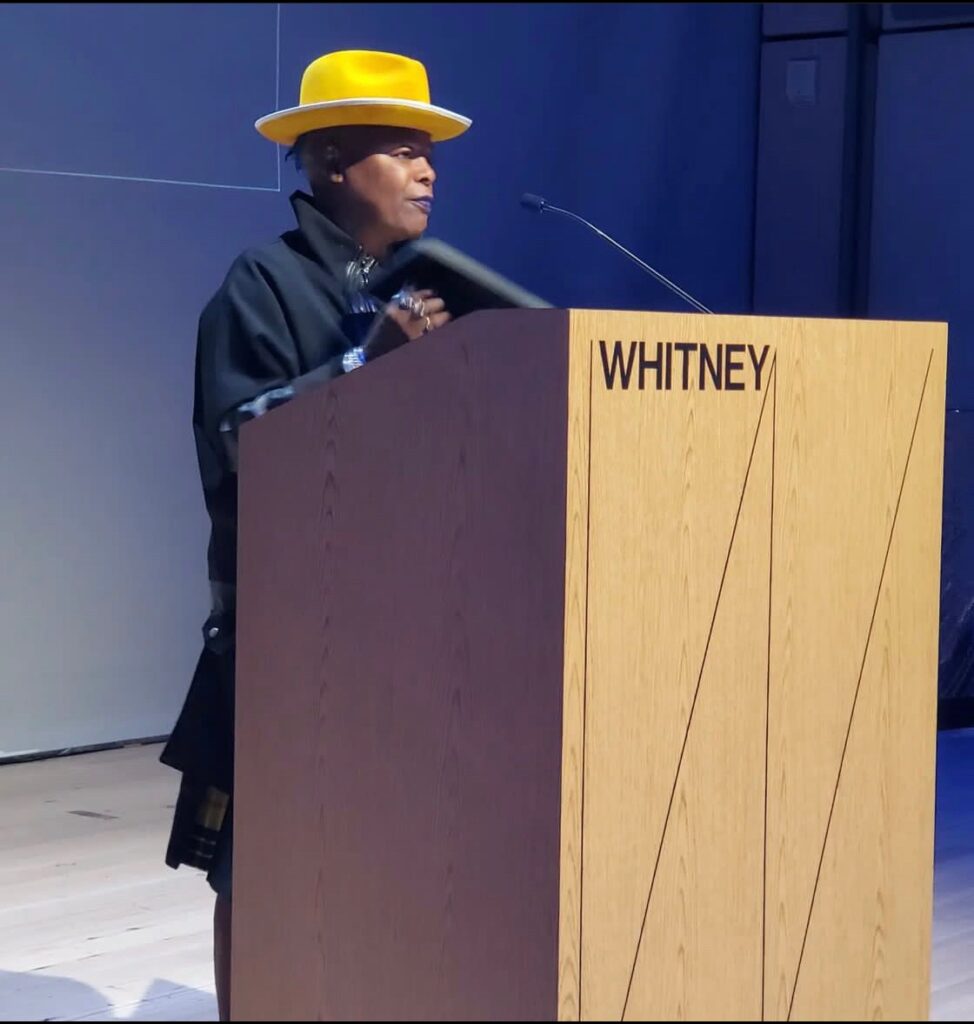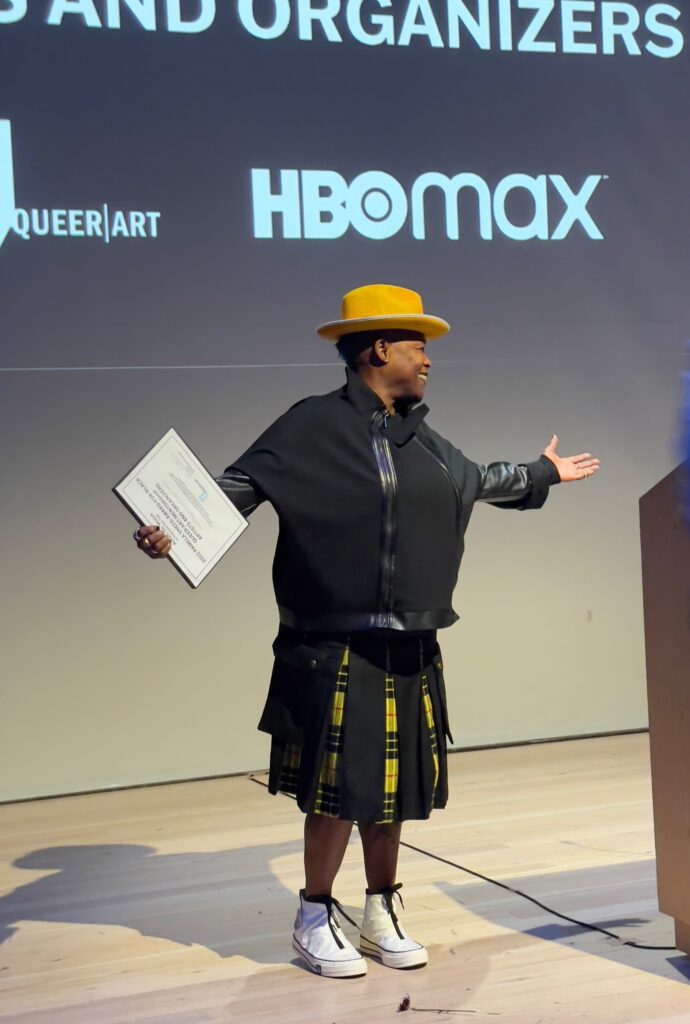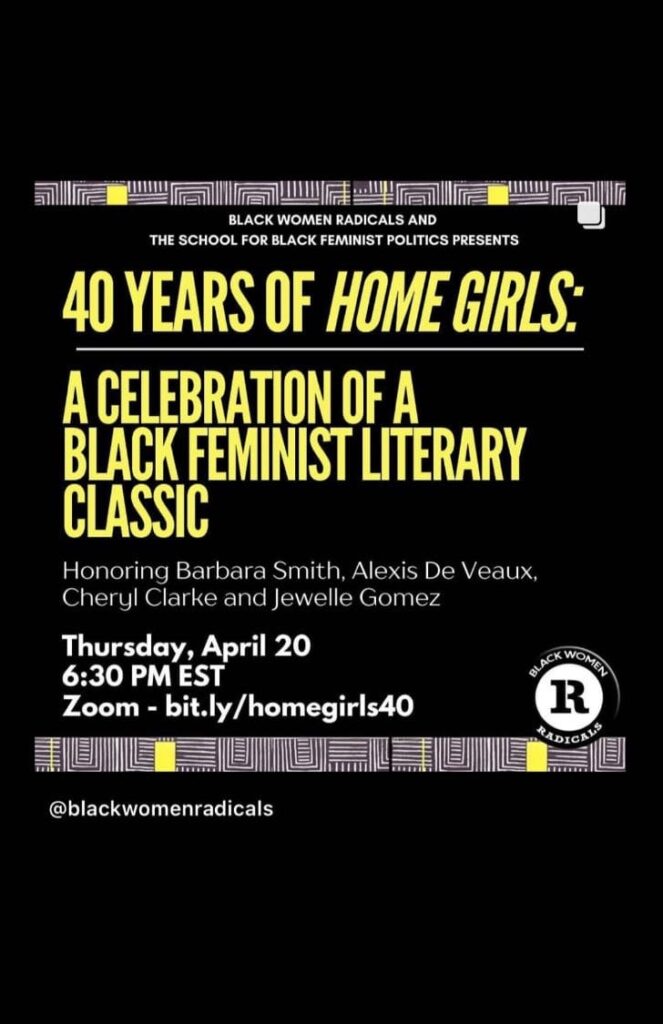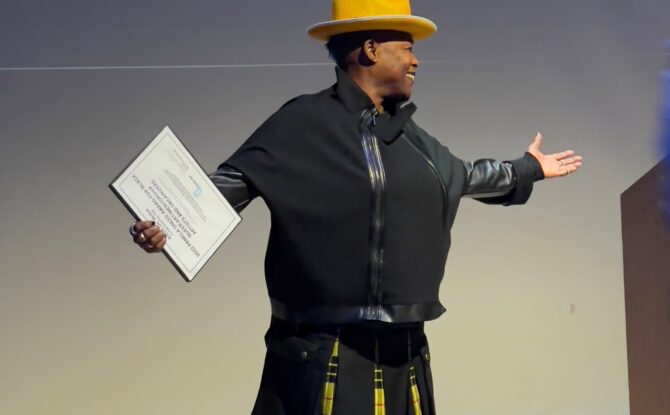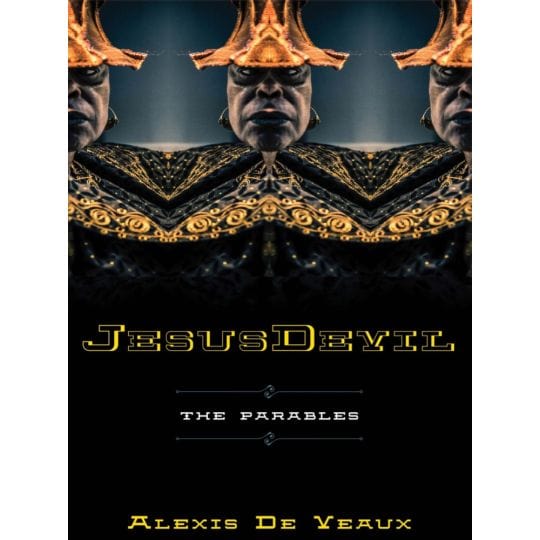
A brilliantly crafted voyage of queer, Black possibility.
“[Alexis] said that what she was currently writing was called afiction, something that was coming through her that was not built as a linear story of generated characters, but as a revealed poetics of gathered and ever-changing spirit.… As she sent me the JesusDevil parables she had written to that point, I read them immediately and asked for more. I felt like I had won a literary lottery for my soul. What I got to read, what you are about to read, is a text that I believe will take its place in Black feminist classic creative literature alongside Toni Cade Bambara’s The Salt Eaters, Ntozake Shange’s For Colored Girls Who Have Considered Suicide…When the Rainbow is Enuf, with the spirit mystery of Toni Morrison’s Beloved. And—it is unlike any of these, or anything else I’ve ever read.” —adrienne maree brown, from the foreword
Evocative and experimental, JesusDevil is a nonlinear tale of black life and spiritual expression. Writing in a style she calls “afiction,” Alexis De Veaux expands and moves beyond traditional narrative, following the adventures of Fhill, a black, queer spirit who has taken human form. Neither male nor female, Fhill moves fluidly and disruptively across concepts of identity, passing through the nine “parables” that comprise this text. Examining aspects of what it means to be black and human—from a nonhuman perspective—Fhill’s liminal nature redefines social and literary categories, exploring social constructions of blackness as well as themes of desire, memory, sex, revenge, and more. A daring new work and crowning achievement from a veteran storyteller.” `“Alexis De Veaux is wholly unique and prone to stunning the breath out of my system….. Forward by adrienne maree brown
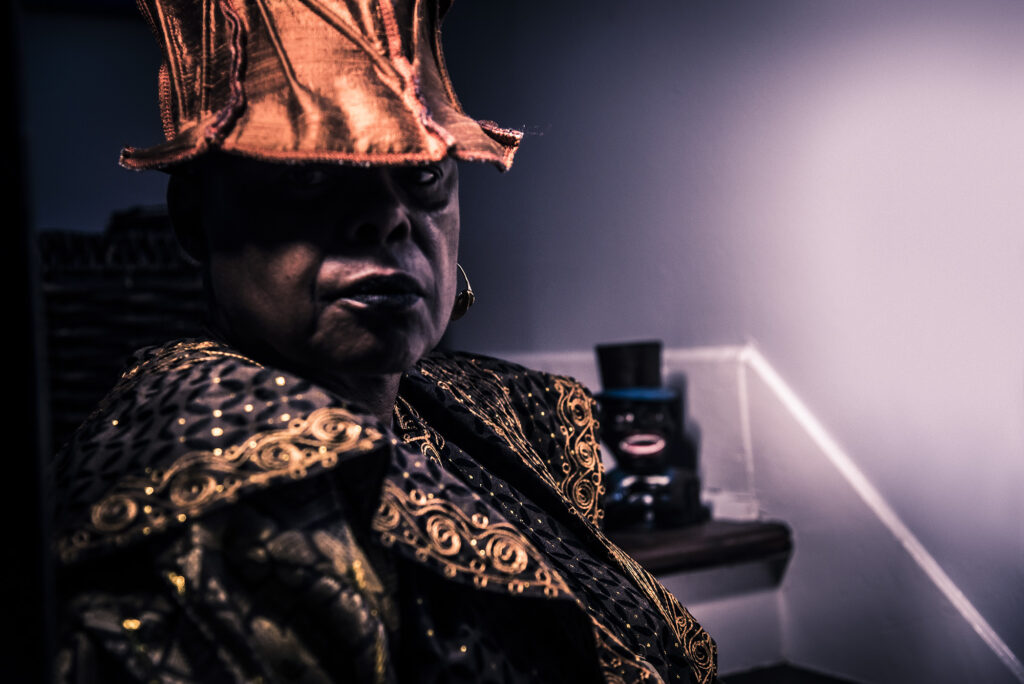
PRAISE FOR JESUSDEVIL, THE PARABLES
“In this timely work, Alexis weaves through and beyond the many ways that a parable can live. She speaks of viruses, sheltering in and folks losing their sense of taste in stories where the dead rise, slay, shake themselves loose and rumble us with their sexy. In this afiction, ancient beings from the future take us down and up roads that can only be detailed in a structure that defies naming. Once again, Alexis has written a book of holy queer, new possibilities. Get ready to open, pause, and wonder.”
—Sharon Bridgforth, author of 2003 Lambda Literary Finalist love conjure/blues and recipient of a 2022 Windham Campbell Prize in Drama
“Our ancestral past, present, and future share a concentric relationship in De Veaux’s prophetic, JesusDevil: The Parables. In these after (other) worlds, Black life is autopoietic. Black life recreates, reproduces, and changes shape, sound, and color. JesusDevil arranges and makes meaning and rhythm through erotic exercise and language. These articulations of the sacred are not about orthodox practice; they are “black sermonic text” of the quotidian, an aesthetic of the ordinary. The body, as De Veaux poeticizes, expands language and biology. The bodypussys both itself and other, the body is self and other. De Veaux’s nine parables are vestibules of possibility and proof that the imagination is the genesis of promise.”
—Briona S. Jones, editor of 2021 Lambda Literary Award Winner Mouths of Rain: An Anthology of Black Lesbian Thought
“In this utterly authentic, deftly crafted, and creatively courageous book, Alexis De Veaux illustrates how the apex of form, style, and matter are more than the tools to document and journey through individual and collective memory; rather, this trinity of craft must, can, has been and will be reimagined in the ritual of storytelling as a portal of constant creation, not simply a tale told simply to arrive someplace and settle. When Fhill, De Veaux’s central character, says she wants “a big life-changing prize or honor that recognizes all we been through over time,” I thought immediately that JesusDevil: The Parables is that prize. It generously invites readers into a dogged literacy, a rigorous reading practice so that we might be fully awash in the complexity of life in spirit, and spirit in life, presented in all its honesty, love, humor, desire, pleasure, pain, and grace. JesusDevil: The Parables is the fulcrum upon which ancestral listening as a technology of writing otherwise, manifests as both possibility and practice. It is a gift to have this book in this time, and now, for all times.”
—Eric Darnell Pritchard, author of Fashioning Lives: Black Queers and the Politics of Literacy
JesusDevil, the Parables is due for publication in June 12th, 2023 and can be preordered through the publishers, AK Press.
I am happy to see that “Black Women Writers at Work” has now been republished by Haymarket Books.
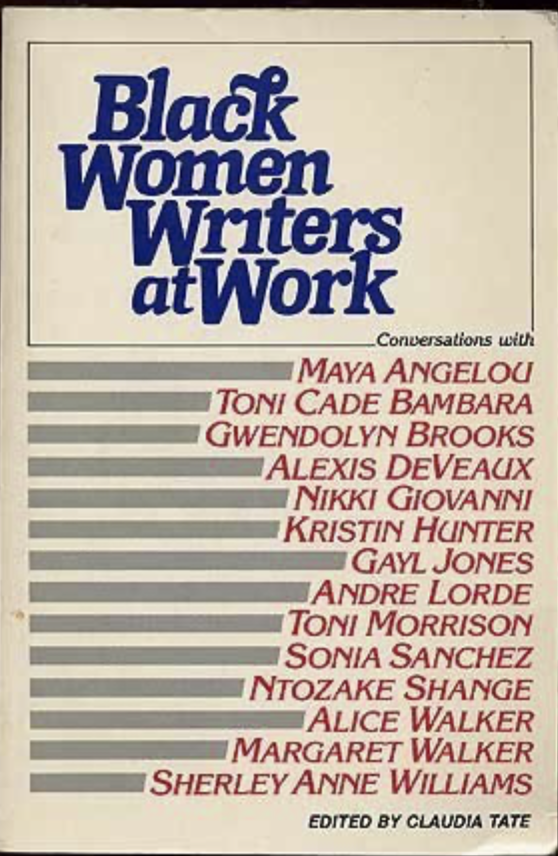
“Black women writers and critics are acting on the old adage that one must speak for oneself if one wishes to be heard.” —Claudia Tate, from the introduction
Long out of print, Black Women Writers at Work is a vital contribution to Black literature in the 20th century.
Through candid interviews with Maya Angelou, Toni Cade Bambara, Gwendolyn Brooks, Alexis De Veaux, Nikki Giovanni, Kristin Hunter, Gayl Jones, Audre Lorde, Toni Morrison, Sonia Sanchez, Ntozake Shange, Alice Walker, Margaret Walker, and Sherley Anne Williams, the book highlights the practices and critical linkages between the work and lived experiences of Black women writers whose work laid the foundation for many who have come after.
Responding to questions about why and for whom they write, and how they perceive their responsibility to their work, to others, and to society, the featured playwrights, poets, novelists, and essayists provide a window into the connections between their lives and their art.
Finally available for a new generation, this classic work has an urgent message for readers and writers today.
Reviews
“When this classic collection was published in 1984, the writers Claudia Tate interviewed were engaged in the creative work that produced new Black feminist terrains. Today Black Women Writers at Work serves as a much-needed reminder that the imagination always blazes trails that lead us toward more habitable futures.”
—Angela Y. Davis, author of Freedom is a Constant Struggle
”This is a gorgeous and essential collection of writings from a group of the most important Black women writers. I have turned to repeatedly over the past thirty years and I’m thrilled that Haymarket has republished it for another generation to treasure.”
—Imani Perry, author of Looking for Lorraine
”[A] rare, rich source books for writers, readers, teachers, students—all who care about literature and the creation of it… This collection transcends its genre. It becomes a harbinger book, a book of revelation, of haunting challenge, opening on to central concerns not only of writing, but of life, of living, today.”
—Tillie Olson, from the Foreword
“Tate’s probing, provocative and insightful questions set a new standard for the interview as a genre.”
—Valerie Smith, Princeton University
Dr De Veaux has been selected to receive this year’s Pamela Sneed award for Black Queer Art Mentorship Arts and Organizers through the Queer Arts project. The award ceremony took place at the Whitney Museum on 10th November, 2022.
The Pamela Sneed Award for Black Queer|Art| Mentorship Artists and Organizers is a $10K prize acknowledging Black Mentors and Fellows from the QAM community who uplift critical histories of Black queer mentorship and uphold guiding principles like intergenerational exchange, collective care, preservation of Black queer legacies.
Judges Justin Allen, Pamela Sneed, and Stephen Winter remark, “Alexis De Veaux is a pioneering force within the LGBTQIA community. Her expansive practice is wide-ranging: from poetry and journalism to children’s literature… As a writer, educator, and public speaker, Alexis’s longstanding dedication to mentorship is clear across fields and generations. To be in the presence of her generous wisdom and infectious spirit is to be inspired.”Queer Arts
